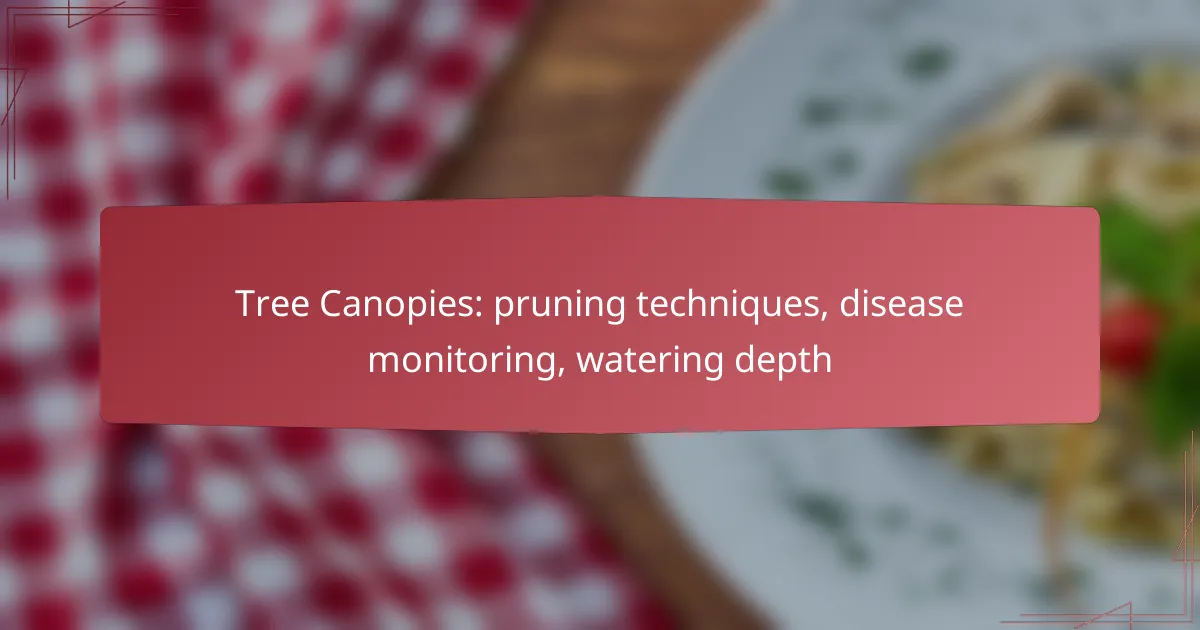Xeriscaping is an effective strategy for managing drought conditions by incorporating drought-resistant plants and efficient landscaping methods. This sustainable approach not only conserves water but also creates visually appealing outdoor spaces, particularly suited for arid climates. By selecting native plants that require minimal upkeep, xeriscaped areas can thrive with reduced maintenance, making them an ideal choice for environmentally conscious gardeners.

How can xeriscaping manage drought in Los Angeles?
Xeriscaping effectively manages drought in Los Angeles by utilizing drought-resistant plants and efficient landscaping techniques. This approach minimizes water usage while maintaining an attractive landscape, making it ideal for the region’s arid climate.
Water-efficient landscaping techniques
Water-efficient landscaping techniques focus on reducing water consumption through strategic plant selection and design. Incorporating native plants that thrive in Los Angeles’ climate can significantly lower irrigation needs, as these species are adapted to local conditions.
Additionally, grouping plants with similar water requirements together can optimize irrigation practices. Consider using mulch to retain moisture in the soil and reduce evaporation, which is crucial in a drought-prone area.
Soil improvement strategies
Improving soil quality is essential for effective xeriscaping, as healthy soil retains moisture and nutrients better. Adding organic matter, such as compost, can enhance soil structure and water retention capabilities.
Conducting a soil test can help identify deficiencies and inform amendments. Aim for a balanced pH and nutrient profile to support the growth of drought-tolerant plants, ensuring they thrive with minimal water input.
Rainwater harvesting systems
Implementing rainwater harvesting systems can significantly supplement water needs for xeriscaped areas. Collecting rainwater from roofs and directing it to storage tanks allows homeowners to utilize this resource during dry spells.
Consider installing a simple rain barrel or a more extensive cistern system, depending on your landscape size and water needs. Ensure that the system complies with local regulations and is properly maintained to prevent contamination and promote efficient water use.

What native plants are best for xeriscaped areas in California?
For xeriscaped areas in California, native plants that thrive in dry conditions are ideal choices. These plants require minimal water and maintenance, making them perfect for sustainable landscaping in a drought-prone environment.
California poppy (Eschscholzia californica)
The California poppy is the state flower and a popular choice for xeriscaping due to its vibrant orange blooms and drought resistance. This perennial plant thrives in well-drained soil and can tolerate poor conditions, making it an excellent option for low-maintenance gardens.
When planting California poppies, consider sowing seeds in the fall or early spring. They prefer full sun and can grow in a variety of soil types, but they flourish best in sandy or loamy soils. Avoid overwatering, as this can lead to root rot.
Manzanita (Arctostaphylos spp.)
Manzanita is a versatile shrub known for its attractive, smooth bark and evergreen leaves. It is well-suited for xeriscaped areas, as it requires little water once established and can thrive in rocky or sandy soils.
Choose from various species of manzanita, as they range in size and shape, providing options for different landscape designs. Prune regularly to maintain shape and encourage new growth, but avoid excessive watering to ensure healthy development.
Lavender (Lavandula spp.)
Lavender is not only a beautiful addition to xeriscaped gardens but also offers fragrant blooms and attracts pollinators. This drought-tolerant herb thrives in sunny spots with well-drained soil, making it ideal for California’s dry climate.
When planting lavender, space plants adequately to allow for air circulation and avoid fungal diseases. Regular pruning after flowering helps maintain its shape and encourages bushier growth. Be cautious with watering; lavender prefers dry conditions and can suffer from overwatering.

How to minimize upkeep in xeriscaped gardens?
Minimizing upkeep in xeriscaped gardens involves strategic planning and the use of specific techniques that reduce maintenance needs. By selecting appropriate plants and implementing efficient watering systems, you can create a low-maintenance landscape that thrives in dry conditions.
Mulching techniques
Mulching is essential in xeriscaped gardens as it helps retain soil moisture and suppresses weed growth. Organic mulches, such as wood chips or bark, can decompose over time, enriching the soil, while inorganic options like gravel or stones provide long-lasting coverage without the need for replacement.
When applying mulch, aim for a thickness of about 2-4 inches to maximize effectiveness. Be sure to keep mulch a few inches away from plant stems to prevent rot and disease.
Drip irrigation systems
Drip irrigation systems deliver water directly to the plant roots, minimizing evaporation and runoff. This method is highly efficient, using significantly less water compared to traditional sprinklers, making it ideal for xeriscaped areas.
Consider installing a timer to automate watering schedules, ensuring plants receive consistent moisture without overwatering. Regularly check for clogs in the drip lines to maintain optimal performance.
Seasonal maintenance tips
Seasonal maintenance in xeriscaped gardens should focus on monitoring plant health and adjusting irrigation as needed. During dry months, check soil moisture levels and adjust your watering schedule accordingly to prevent stress on plants.
In the fall, remove any dead plant material and apply a fresh layer of mulch to protect the soil during winter. Regularly inspect for pests and diseases, addressing any issues promptly to maintain a healthy garden ecosystem.

What are the cost considerations for xeriscaping in urban areas?
Xeriscaping in urban areas involves several cost considerations, including initial installation expenses, long-term savings on water bills, and potential increases in property value. Understanding these factors can help homeowners make informed decisions about implementing xeriscaping in their landscapes.
Initial installation costs
The initial installation costs for xeriscaping can vary widely depending on the size of the area and the types of plants selected. Homeowners can expect to spend anywhere from a few hundred to several thousand dollars. Factors influencing these costs include soil preparation, plant selection, and any necessary hardscaping features.
Choosing native plants and drought-resistant species can help manage these costs effectively. Local nurseries often offer guidance and may provide discounts for bulk purchases, which can further reduce initial expenses.
Long-term savings on water bills
Xeriscaping significantly reduces water usage, leading to long-term savings on water bills. Homeowners can expect to save up to 50% or more on their monthly water expenses compared to traditional landscaping. This reduction is particularly beneficial in areas with high water rates or during drought conditions.
Additionally, many municipalities offer rebates or incentives for xeriscaping projects, which can offset initial costs and enhance overall savings. Checking with local water authorities can provide information on available programs.
Potential increase in property value
Investing in xeriscaping can potentially increase property value, as many buyers appreciate low-maintenance, environmentally friendly landscapes. Properties with well-designed xeriscaped areas may attract higher offers, especially in regions prone to drought.
Research indicates that homes with xeriscaping can see property value increases ranging from 5% to 15%. This enhancement is often due to the aesthetic appeal and reduced maintenance requirements associated with xeriscaped yards.

What permits are required for xeriscaping in California?
In California, xeriscaping typically requires adherence to local regulations and may involve obtaining specific permits. Homeowners should check with their city or county planning departments to understand the necessary approvals for implementing drought-resistant landscaping.
Local zoning regulations
Local zoning regulations in California can dictate the types of plants and landscaping features allowed in residential areas. These rules may vary significantly between municipalities, so it’s essential to consult local zoning codes to ensure compliance. Some areas may have restrictions on the use of certain non-native plants or require specific design elements.
Before starting a xeriscaping project, verify if your property is in a designated zone that has additional requirements, such as maintaining a certain percentage of permeable surfaces or incorporating native plant species.
Water conservation guidelines
California has established water conservation guidelines that promote the use of drought-tolerant plants and efficient irrigation systems. These guidelines often encourage homeowners to minimize water use through smart landscaping practices. Familiarize yourself with the state’s Model Water Efficient Landscape Ordinance, which outlines standards for water-efficient landscaping.
In some regions, you may need to submit a landscape plan that demonstrates compliance with these water conservation guidelines before receiving approval for your xeriscaping project.
Landscape design approvals
Obtaining landscape design approvals is a critical step in the xeriscaping process. Many California jurisdictions require homeowners to submit detailed plans that outline the proposed design, plant selection, and irrigation methods. This ensures that the project aligns with local environmental goals and regulations.
When preparing your design, consider including a plant palette that features native and drought-resistant species, as this can enhance your chances of approval. Additionally, be prepared to make adjustments based on feedback from local planning officials to meet all necessary requirements.

How does xeriscaping compare to traditional landscaping?
Xeriscaping significantly reduces water usage compared to traditional landscaping by utilizing drought-resistant plants and efficient irrigation techniques. This approach not only conserves water but also minimizes maintenance needs, making it an attractive option for sustainable gardening.
Water usage differences
Xeriscaped areas typically use 50-75% less water than conventional landscapes. Traditional landscaping often relies on high-water-demand plants and frequent irrigation, while xeriscaping focuses on native and drought-tolerant species that thrive with minimal watering. For instance, a traditional lawn may require several inches of water weekly, whereas xeriscaped gardens can flourish on just a few inches per month.
Implementing efficient irrigation systems, such as drip irrigation or rainwater harvesting, further enhances water conservation in xeriscaped areas. Homeowners can significantly lower their water bills while contributing to local water sustainability efforts.
Maintenance requirements
Xeriscaped gardens generally require less upkeep than traditional landscapes, which often need regular mowing, fertilizing, and pest control. Native plants selected for xeriscaping are adapted to local conditions, making them more resilient and less prone to disease and pests. This means less time and fewer resources spent on maintenance tasks.
To maintain a xeriscaped area, focus on occasional weeding and mulching to suppress weeds and retain moisture. A well-planned xeriscape can thrive with minimal intervention, allowing homeowners to enjoy their gardens without the burden of extensive care.



